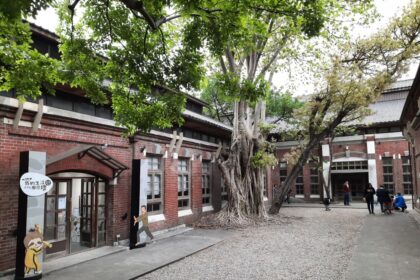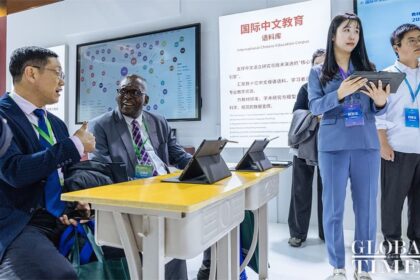A sharp rise in early retirement plans across corporate Japan
Corporate Japan is accelerating the use of early retirement and voluntary exit programs in 2025 as leaders seek to raise productivity and retool workforces that skew older. As of Nov 10, publicly listed companies had targeted 11,045 employees for early retirement, a four year high. The activity is centered on the Tokyo Stock Exchange Prime Market, with electric equipment, food, metal products and machinery companies leading the way. Offers typically focus on employees aged 50 and above, a striking shift from the country’s long standing system of lifetime employment and seniority based pay. Management teams say the aim is to strengthen competitiveness in markets facing rapid technological change and tougher global demand.
- A sharp rise in early retirement plans across corporate Japan
- What is driving the wave of voluntary exits
- Which companies are cutting and where the jobs are
- How the aging workforce is reshaping work
- Technology and AI, promise and limits
- Policy choices and corporate responses
- What this means for growth and wages
- Key Points
Investor pressure is also a factor. Companies face rising expectations to deliver higher returns and strengthen capital efficiency. Of the 41 companies implementing retirement programs in 2025, 28 reported profits, and 77 percent of the targeted positions came from those profitable firms. That makes clear these moves are not confined to distressed employers. Many companies are pairing these programs with strategic reorganizations, shifting resources toward growth areas and trimming business lines that no longer meet profitability hurdles. At the same time, some employers have extended retirement to at least 65, or offer continued employment after the formal retirement age, but practice varies widely across industries and company size.
What is driving the wave of voluntary exits
Demographics sit at the center of this story. Japan has the oldest population in the world. More than one in ten people are 80 or older, and almost a third are over 65. The birth rate is far below replacement levels. Government and industry forecast an acute labor shortfall in the coming decades, with estimates that the economy could be short of millions of workers by 2040 if participation and productivity do not rise. Longer life expectancy is stretching pension and health systems, while companies face rising costs to maintain seniority based pay structures in a workforce that is aging rapidly.
Corporate governance reforms also matter. Stock exchange guidance has put new focus on profitability, price to book ratios and capital allocation discipline. That scrutiny, together with more vocal activist shareholders, is pushing management to review portfolios, close or sell underperforming units, and cut expenses. Early retirement programs offer a relatively swift way to align headcount with new strategies while avoiding forced layoffs, which remain culturally sensitive in Japan.
Economists say the new cycle is as much about the quality of work as the quantity. Before the pandemic, many firms tried to keep headcount stable to honor implicit employment promises. With pressure rising on productivity and returns, the balance has shifted. Shintaro Iwai, an economist at Dai-ichi Life Research Institute, framed it bluntly. After describing how process review and digital tools can remove duplicative roles, he added:
“It is no longer feasible to operate on a business as usual basis. The focus is on eliminating redundant tasks to boost productivity and efficiency.”
Which companies are cutting and where the jobs are
Several well known names have turned to early retirement or restructuring this year. Panasonic, Japan Display, Mitsubishi Electric, Mitsubishi Chemical Group and Meiji Holdings have offered packages to older staff. The largest concentrations are in electric equipment, metal products and machinery, where legacy product lines, complex supply chains and automation pressures are strongest. Food producers are also represented as they adjust to changing consumer demand and rising input costs.
Medical technology group Olympus has announced plans to trim about 2,000 positions as it reshapes its endoscopy business and streamlines operations. That effort is global, and underscores how Japanese companies are balancing domestic demographic pressures with the need to compete internationally in fast moving markets. In many cases, the offers include a one time payout, job placement support and training vouchers. The programs are usually time limited, and firms sometimes signal preferred age brackets or job categories to encourage specific profiles to apply. While these steps reduce payrolls today, they also open space to recruit midcareer specialists in areas like software, advanced manufacturing and digital sales.
How the aging workforce is reshaping work
Japan’s labor market is tight, yet the composition of work is changing. Many employers have raised the standard retirement age to 65, and since 2021 companies have been encouraged to offer continued employment opportunities up to 70. At the same time, a growing share of large firms is using early retirement schemes to refresh teams. The shift reflects a move away from a model where employees advanced mainly through tenure toward one that values defined skills and performance. Midcareer hiring has grown as companies search for talent that can hit the ground running in growth fields.
The transition is not easy for older workers who do leave. Research across advanced economies finds that displaced workers in their late 50s and 60s tend to face longer spells out of work and larger wage losses when they find new roles. The gap is widest for people with lower education levels or in physically demanding jobs. Policy specialists stress the need for lifelong learning, better job quality and age inclusive practices. Flexible hours, ergonomic redesign and autonomy can help older employees remain productive for longer. Where transitions are unavoidable, robust job placement services and targeted training raise the odds of a successful move into in demand occupations.
Technology and AI, promise and limits
Japan is a leader in industrial robotics, but the spread of digital tools across offices and services has been uneven. New research on aging and artificial intelligence shows why that matters. An analysis using occupational data finds that the aging workforce contributes to labor shortages and can weigh on productivity growth. The same work shows Japanese roles, on average, have lower exposure to AI tools than jobs in several other advanced economies. Lower exposure can slow the ability of AI to offset labor shortages, especially in routine office tasks or service roles where AI is already boosting output elsewhere.
Technology can still help, but the mix of tasks is crucial. Some jobs benefit from AI assistance, while others are at risk of automation. The key is skill transfer. Workers leaving legacy roles need pathways into jobs that rely on overlapping capabilities. That calls for modular training programs, digital upskilling and credentials that employers trust. Companies that pair early retirements with aggressive investment in training and internal mobility are more likely to realize productivity gains. Without those bridges, early retirement can drain institutional knowledge and increase the risk that critical processes suffer.
Policy choices and corporate responses
Public policy has begun to adjust to aging. Japan has encouraged work beyond traditional retirement, with reforms that support continued employment for older workers and flexibility around pension receipt. The intent is to keep more people in work, improve living standards and ease pressure on the social safety net. A wider set of actions can reinforce that aim. These include stronger prevention and rehabilitation for health conditions that push people out of work, incentives for employers to invest in training throughout careers, and better enforcement of rules against age discrimination. Support for women’s employment, including childcare access, also raises participation and helps offset demographic decline.
Companies control the day to day practices that determine whether older workers thrive. Moves toward job based pay, clearer role definitions and performance linked wages can increase demand for experienced staff. Physical redesign of roles, more autonomy and flexible schedules help keep people in work beyond 60. Redeployment programs that move staff from declining to growing units, together with serious investment in learning, allow firms to avoid blunt cuts. In sectors facing rapid change, from automotive electrification to semiconductors and digital services, the mix of voluntary exits, targeted hiring and reskilling will determine whether productivity improves.
What this means for growth and wages
The early retirement wave is unfolding as regional growth cools. Asia remains a strong contributor to global output, but trade risks and tighter financial conditions are weighing on investment. Japanese exporters face a mixed outlook, with a resurgent tech cycle supporting some firms and softer external demand pressuring others. In this environment, management teams are using restructuring to protect margins and focus capital on higher return projects. That can support shareholder returns, yet it places a premium on maintaining human capital so that new investments translate into sustained productivity gains.
For households and communities, the changes bring both risk and opportunity. Early retirement packages can cushion income in the short run. The bigger challenge is replacing stable, senior roles with new jobs that pay well and use older workers’ strengths. Regions with a heavy concentration of legacy manufacturing face an adjustment as employers streamline. Where firms pair exits with retraining and midcareer hiring, the local skills base can evolve toward growth sectors. Where they do not, the result can be longer unemployment spells and weaker consumption. Japan’s demographic reality means it will rely on higher labor force participation, better job matching and more effective use of technology to raise growth without relying on a larger population.
Key Points
- Publicly listed companies in Japan targeted 11,045 employees for early retirement by Nov 10, 2025, a four year high.
- More than 90 percent of affected workers are at Tokyo Stock Exchange Prime Market firms in electric equipment, food, metal products and machinery.
- Most programs focus on staff aged 50 and above, marking a move away from lifetime employment and seniority based pay.
- Investor pressure and stock exchange guidance on capital efficiency are pushing companies to streamline and reallocate resources.
- Of 41 firms using retirement programs in 2025, 28 were profitable and accounted for 77 percent of targeted positions.
- Olympus plans to cut about 2,000 roles as it restructures its endoscopy business, signaling broader moves to reshape portfolios.
- Japan’s population is the oldest globally, and the economy faces a potential shortfall of workers by 2040 without higher participation and productivity.
- Research finds aging contributes to labor shortages and can weigh on productivity, while AI exposure in Japanese jobs is comparatively lower.
- Older workers often face longer joblessness and larger wage losses after displacement, underscoring the need for training and age inclusive practices.
- Policy steps that support work beyond 60, flexible retirement, training access and better job quality will determine how the transition affects growth and wages.












